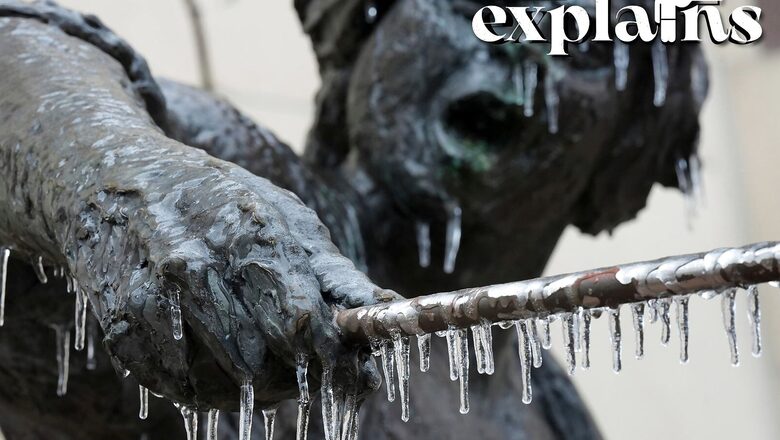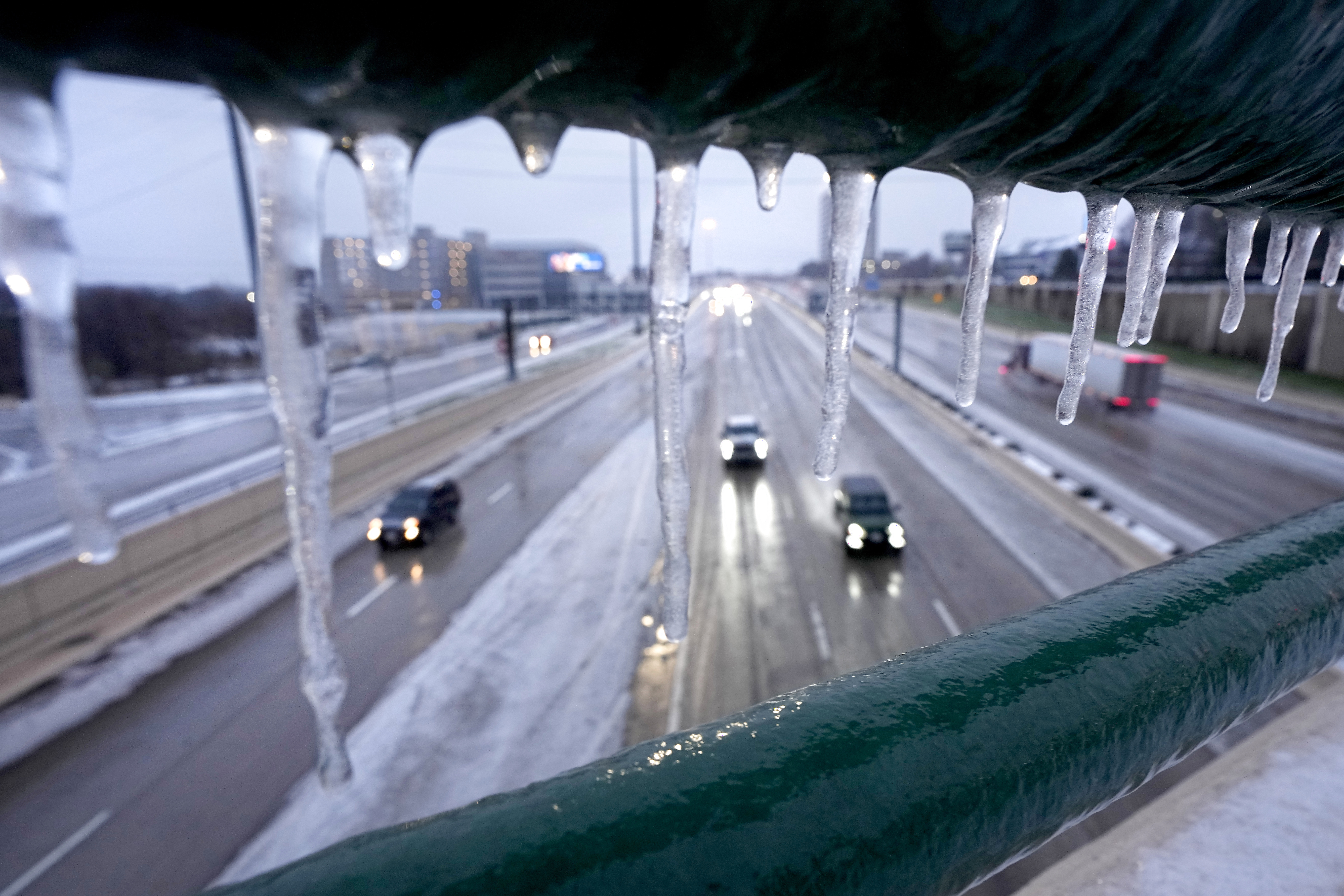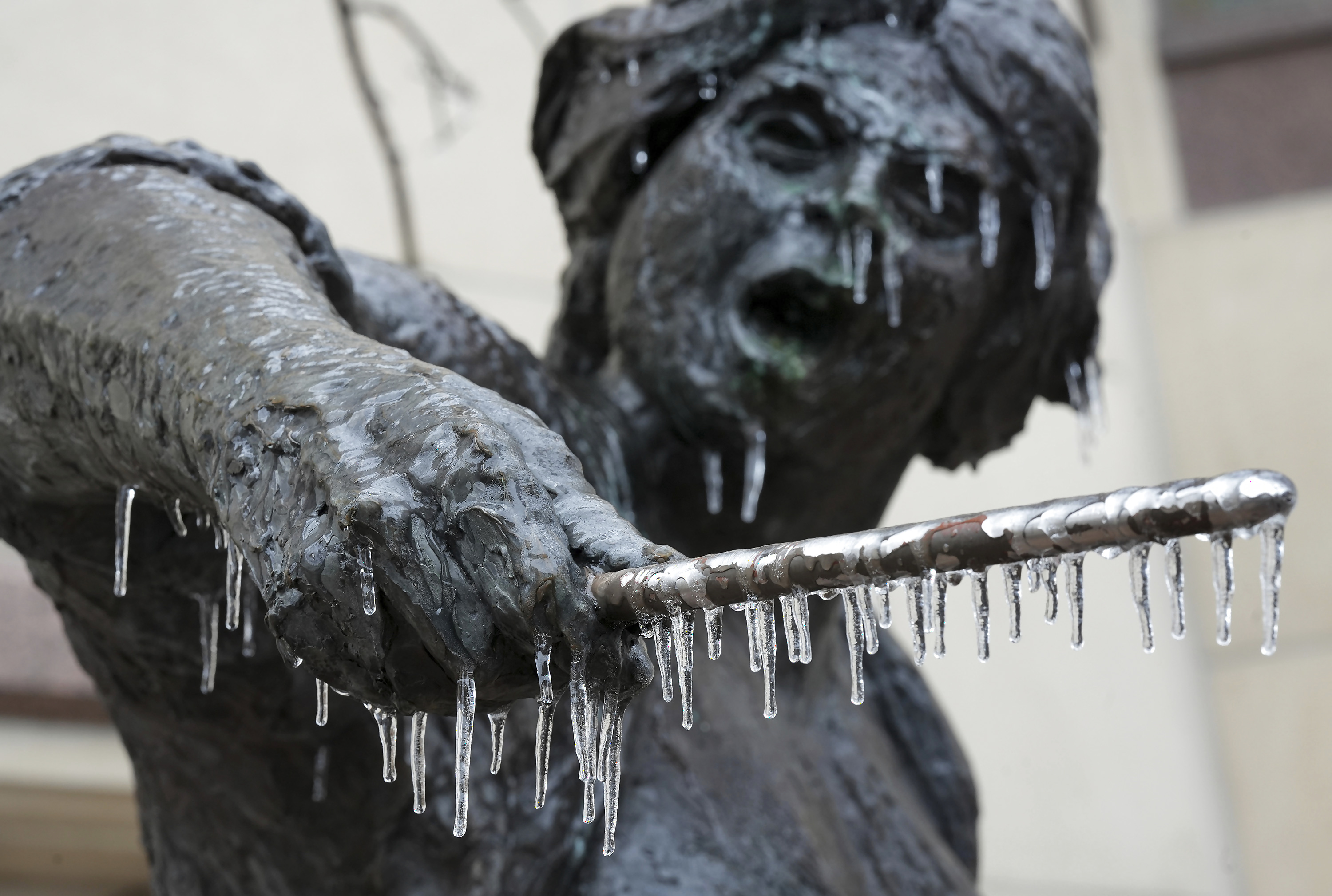
views
Northeast America is preparing for a blast of severely cold air that forecasts say might be the coldest felt in decades, as hundreds of thousands of people in Texas remain without power on Thursday amid subzero temperatures and slippery roadways.
A catastrophic ice storm that poured numerous rounds of sleet and freezing rain and created perilous driving conditions in neighbouring states like Oklahoma, Arkansas, and the Memphis region of Tennessee has mostly affected Texas, CNN reported.
A third individual was believed to have died in the storm on Wednesday in Texas after losing control of her truck on an ice road north of Eldorado. Officials reported that a 10-vehicle pileup in Austin claimed the lives of one person, and that a car rollover in Arlington, a city near Dallas, claimed the lives of another person, the report said.
What Is Happening?
Tuesday’s ice storm caused by winter weather caused more than 1,700 airline cancellations worldwide and gridlocked roadways. Texas’ slippery roadways claimed the lives of at least two people, while two law enforcement officials in the state, including a deputy who was pinned under a truck, suffered critical injuries.
Watches and warnings were issued from West Virginia all the way to Texas’ western heel as the ice storm moved east. The federal Weather Prediction Center cautioned that many rounds of mixed precipitation, including sleet and freezing rain, were expected for several places through Wednesday. As a result, some communities might experience more than one round of flooding.

Texas’ Republican governor, Greg Abbott, encouraged citizens to avoid the roadways as emergency personnel flocked to hundreds of traffic accidents around the state.
Tuesday saw more than 560 flights from Dallas-based Southwest Airlines cancelled and more than 350 delayed, according to FlightAware.
Following a briefing on the deteriorating situation in Austin, Republican Governor Greg Abbott stated that as of late Tuesday morning, almost 7,000 power outages had been reported in Texas. He highlighted that the power outages were not caused by the Texas power grid’s performance, which buckled for days during a fatal winter storm in 2021, but rather by things like ice on power lines or fallen trees.
Over 1,600 of the frozen roads were served by fleets of emergency vehicles.
But why the storm?
Winters are becoming warmer because to global warming. However, recent severe winter storms in the United States have led to a closer examination of the relationship between these extremely cold events and climate change.
While there is a clear connection between global warming and heat waves, it is more challenging to investigate the complicated atmospheric dynamics that control the behaviour of winter storms, an analysis by AFP said.
Nevertheless, “there are some characteristics of winter storms (…) where the climate change links are very strong and robust,” University of Pennsylvania climatologist Michael Mann told AFP.
For instance, the amount of snowfall is influenced by the warming of bodies of water, such as lakes or oceans.
Around the Great Lakes region on the Canadian border, a phenomenon known as “lake-effect snow” takes place in the United States. Buffalo, which is located on the shore of one of the Great Lakes, was severely affected by a deadly snowstorm over the Christmas holiday.
Convection, which results in snowfall, is brought on by the interaction of the warmer water of these lakes with the cold air from the north.

Michael Mann stated in a 2018 research that “the warmer those lake temperatures, the more moisture (there) in the air, and the higher potential for lake-effect snows.”
Not surprisingly, as temperatures have risen over the past century, we have seen a long-term rise in lake effect snowfalls.
There is disagreement over other mechanisms, such as how climate change may affect the polar vortex and jet stream air currents.
An air mass called the polar vortex is found high in the stratosphere over the North Pole. The stratosphere is slightly above the troposphere, where people live.
The chilly air in the north and the warmer air in the south are separated from it by a belt of rotating air that surrounds it. This belt of air starts to undulate and take on a more oval shape as the polar vortex weakens, delivering more frigid air south.
This kind of disturbance, which is happening increasingly frequently, is reflected in the next two weeks lower in the troposphere, where the jet stream is located, according to a 2021 study.
Following the boundary between cold and warm air once more, this air current that flows from west to east then meanders such that cold air from the north might infiltrate at lower latitudes, especially over the eastern United States.
“Everyone believes that there is an increase in the chance of severe winter weather when the polar vortex becomes perturbed or disrupted,” said Judah Cohen, main author of the study and climatologist for Atmospheric and Environmental Research (AER).
He also noted that this “extended” arctic vortex was precisely what was seen immediately before the storm that struck the United States in December.
The same thing happened in Texas in February 2021 during a severe cold wave that resulted in widespread power disruptions.
Polar Vortex
The real issue at hand, though, is what is causing the polar vortex to be more disturbed than usual.
Cohen claims that they are connected to Arctic developments that have been hastened by climate change. Sea ice is melting quickly on the one hand, and Siberia’s snow cover is growing on the other.
I have studied this subject for more than 15 years, and I am now more certain of the connection than I have ever been, he told AFP.
But as Mann said, there is still “an ongoing disagreement within the scientific community.”
“Climate models may not yet fully represent the underlying physics that may be important to how climate change is affecting the behaviour of the jet stream.”
The mysteries behind these intricate chain reactions will still require further research in the upcoming years.
With inputs from AFP, Associated Press, CNN
Read all the Latest Explainers here




















Comments
0 comment